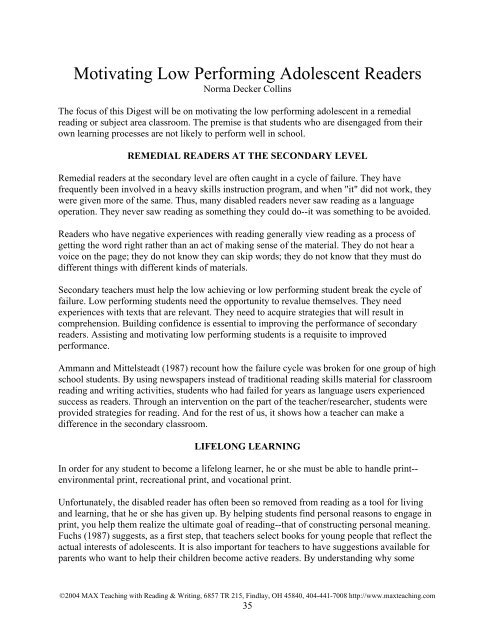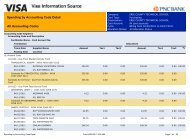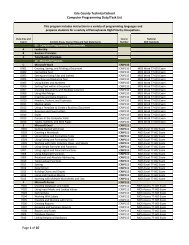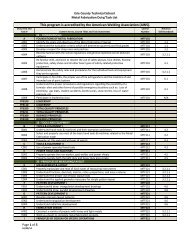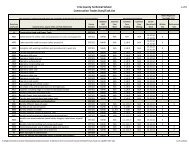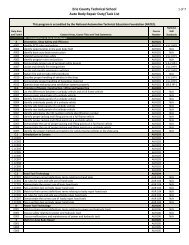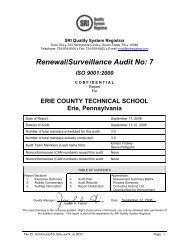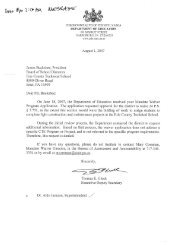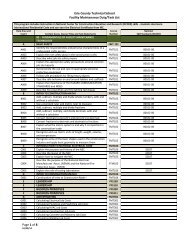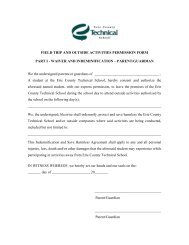MAX Teaching with Reading and Writing - Ects.org
MAX Teaching with Reading and Writing - Ects.org
MAX Teaching with Reading and Writing - Ects.org
You also want an ePaper? Increase the reach of your titles
YUMPU automatically turns print PDFs into web optimized ePapers that Google loves.
Motivating Low Performing Adolescent ReadersNorma Decker CollinsThe focus of this Digest will be on motivating the low performing adolescent in a remedialreading or subject area classroom. The premise is that students who are disengaged from theirown learning processes are not likely to perform well in school.REMEDIAL READERS AT THE SECONDARY LEVELRemedial readers at the secondary level are often caught in a cycle of failure. They havefrequently been involved in a heavy skills instruction program, <strong>and</strong> when "it" did not work, theywere given more of the same. Thus, many disabled readers never saw reading as a languageoperation. They never saw reading as something they could do--it was something to be avoided.Readers who have negative experiences <strong>with</strong> reading generally view reading as a process ofgetting the word right rather than an act of making sense of the material. They do not hear avoice on the page; they do not know they can skip words; they do not know that they must dodifferent things <strong>with</strong> different kinds of materials.Secondary teachers must help the low achieving or low performing student break the cycle offailure. Low performing students need the opportunity to revalue themselves. They needexperiences <strong>with</strong> texts that are relevant. They need to acquire strategies that will result incomprehension. Building confidence is essential to improving the performance of secondaryreaders. Assisting <strong>and</strong> motivating low performing students is a requisite to improvedperformance.Ammann <strong>and</strong> Mittelsteadt (1987) recount how the failure cycle was broken for one group of highschool students. By using newspapers instead of traditional reading skills material for classroomreading <strong>and</strong> writing activities, students who had failed for years as language users experiencedsuccess as readers. Through an intervention on the part of the teacher/researcher, students wereprovided strategies for reading. And for the rest of us, it shows how a teacher can make adifference in the secondary classroom.LIFELONG LEARNINGIn order for any student to become a lifelong learner, he or she must be able to h<strong>and</strong>le print--environmental print, recreational print, <strong>and</strong> vocational print.Unfortunately, the disabled reader has often been so removed from reading as a tool for living<strong>and</strong> learning, that he or she has given up. By helping students find personal reasons to engage inprint, you help them realize the ultimate goal of reading--that of constructing personal meaning.Fuchs (1987) suggests, as a first step, that teachers select books for young people that reflect theactual interests of adolescents. It is also important for teachers to have suggestions available forparents who want to help their children become active readers. By underst<strong>and</strong>ing why some©2004 <strong>MAX</strong> <strong>Teaching</strong> <strong>with</strong> <strong>Reading</strong> & <strong>Writing</strong>, 6857 TR 215, Findlay, OH 45840, 404-441-7008 http://www.maxteaching.com35


